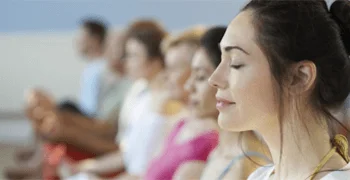Mindfulness Meditation Training by Girish Jha
Mindfulness Meditation Training by Girish Jha
Mindfulness meditation is one of the most popular forms of mindfulness meditation in the United States and has a number of benefits, such as allegedly influencing mental events without engaging with a particular attention-seeking facility. The core concept behind mindfulness involves paying attention to the present moment and reaching a state of consciousness in a non-judgmental and accepting manner.
Care reflection is a psychological preparing practice that instructs us to hinder our dashing musings, relinquished antagonism, and quiet our brain and body. Rather than trying to change our emotional experiences, this meditation practice trains individuals to simply recognize and observe emotions for what they are, and to accept them as they arise. Mindfulness techniques can vary, but in general mindfulness meditation involves breathing exercises and awareness of body and mind.
Whether you are just hearing about mindfulness meditation for the first time, have been dealing with it lately, or have been practicing it for years, here are a few more resources related to the topic. Whether candles, essential oils, or mantras: no props or preparations are required for mindfulness meditation. There are many resources that should help you take your practice to the next level.
Before reading this article, I recommend you download the 3 Mindfulness Exercise Package for free and download it from the free download page.
You will not only understand mindfulness theoretically, but you will also have the tools to apply it to your work with clients and students.
If you are too restless to do sitting meditation, you can do something: turn your meditation sessions into walking. Mindfulness meditation practice has its own techniques to help you walk more mindfully and to help you develop mindfulness. The techniques are the same, but the meditation session consists of walking, and the mindfulness practice itself is dedicated to walking and meditation.
When your mind begins to wander, let go of your thoughts and focus on refocusing your consciousness on the chosen object of attention. Instead of taking out your phone and walking away from it, walk with your eyes open, let your mind wander aimlessly, and then walk again.
You do not have to sit still to enjoy the benefits of meditation; some techniques that involve movement are common practices and include walking meditation, meditation, and even yoga or other forms of yoga.
If you want to learn more about meditation or try it yourself, have a look at the resources and tools below for more information.
Mindfulness meditation is the most popular meditation technique in the West, so read on to learn how to do it. In mindfulness meditation, you pay attention to your thoughts as they go through your mind.
You can focus on an object like your breath while observing body sensations, thoughts, and feelings, or you can focus on the object of breath.
There is more than one approach to rehearse care, yet the objective of all care methods is to accomplish a condition of sharpness, fixation, and unwinding by focusing on thoughts and sensations consciously and without judgment. Sit still and allow your thoughts to come and go without judgment, or concentrate on words or mantras that you repeat silently.
Pay particular attention to where you feel emotions in your body and where they generate qualities of acceptance and curiosity. You can feel the tingling without judgment, the feeling of pain without tingling, and the feeling of peace and quiet. Let your thoughts, feelings, emotions, body sensations, thoughts, and sensations tingle and let them come to you, in their own time.
This is called indiscriminate consciousness because one becomes aware of what is prevalent in one's consciousness when one chooses it. This meditation slightly expands mindfulness, which usually means paying attention to the present moment of experience. Mindfulness cultivates the ability to draw attention to one's own thoughts, feelings, emotions, body sensations, thoughts, and sensations.
One can learn to meditate alone by following the instructions in a book or on tape, or one can learn to follow them on YouTube.
Nevertheless, a book can be beneficial to promote his or her learning, answer questions, and stay motivated. In the event that you incline toward perusing books regarding this matter to web articles, sites, and preparing, here are the 7 best books on care reflection. These books serve as a complete mindfulness meditation program that anyone can complete from the comfort of their own home.
Henepola Gunaratana brings more than 50 years of involvement as a Buddhist priest to this book, which fills in as a prologue to care and care reflection. This is unique mindfulness - an experienced way of teaching mindfulness meditations or mindfulness meditations to a Western audience. If you cannot personally participate in any kind of mindfulness meditation, this is the next best thing.
This book is an introduction to mindfulness meditation, offers guided meditation sessions, and suggests different times in your daily life when you can practice it. With twelve lessons, including a CD of accompanying mindfulness meditation, this book can help budding mindfulness meditators on their journey in many ways and serves as a complete set.



Comments
Post a Comment